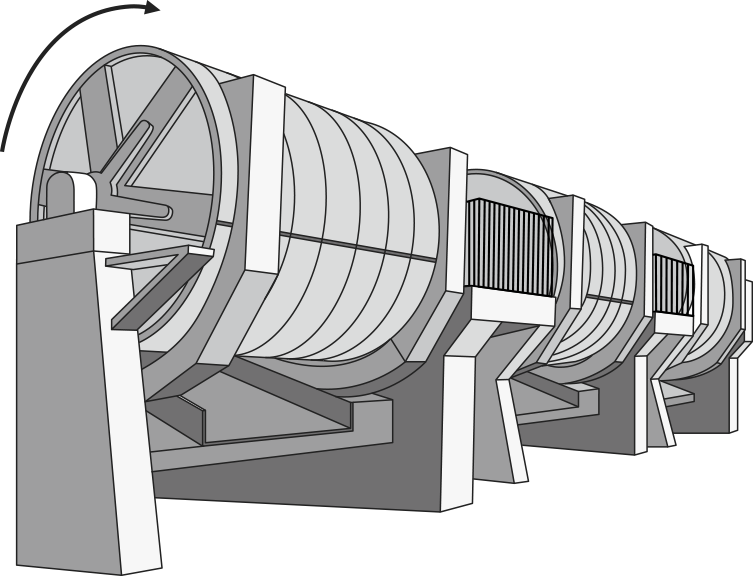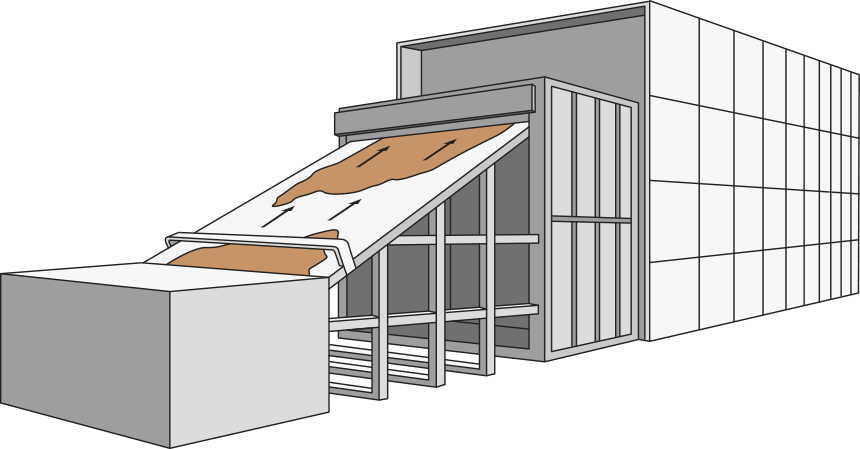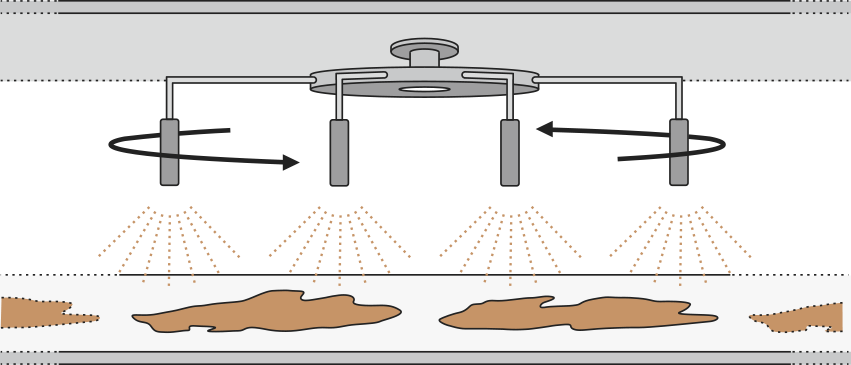TECHNOLOGY
How We Do It
Technology is constantly evolving, and the technology for leather making is no exception.
However, technology alone cannot bring out the inherent superb quality of leather.
The creation of beautiful leather still requires skilled craftsmanship.
How do we put all this into practice? Read on.
Genuine Leather Production Processes
-
1Soaking Process
Our material of choice is chromium-tanned hide (otherwise known as "wet blue") from overseas. At our factory, the rear side of the hide is shaved down to the specified thickness, and then loaded into large drums for chemical retanning. This process, which requires numerous additional tanning agents, dyes, and oils, determines the texture and colors required for a given purpose.

-
2Drying Process
After dyeing, the leathers are purged of excess moisture and dried via back and forth conveyor motion, binding all chemicals and dyes completely to the leathers. To create the desired texture, the fibers of the dried leathers are separated and softened by a mechanical process.

-
3Finishing Process
To achieve a consistent surface color, the dried leathers are painted several times mechanically using a roller coating machine or spray machine employing proprietary paint formulas. We mix paint components and create the colors for all the paints we use in the finishing process. Quality is strictly governed using both computers and trained supervisors. Depending on the end result in mind, grain patterns may also be applied to the surface of the leathers. The products are then spray-finished with a urethane resin to enhance their durability.

-
4Cutting Process
To satisfy stringent standards in regard to a final product's appearance, the leather is checked for defects. Punches are used to manually cut out the leather and any necessary perforations (for embellishment or ventilation) are added at this stage. Recently developed computerized perforation methods have further opened up design possibilities.

